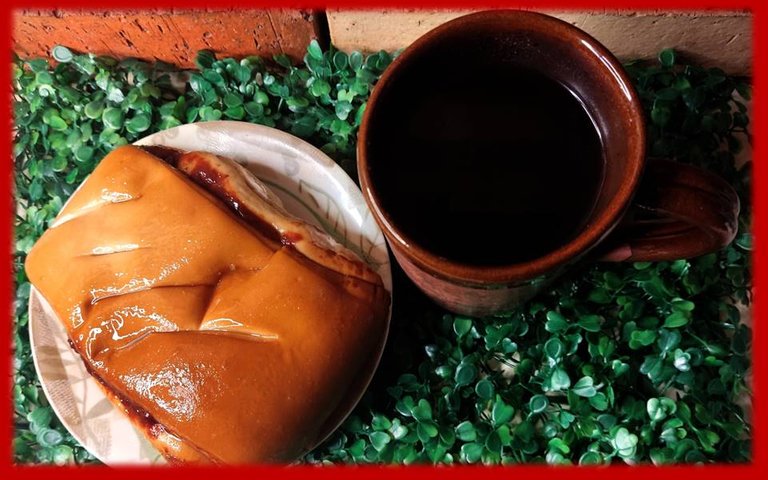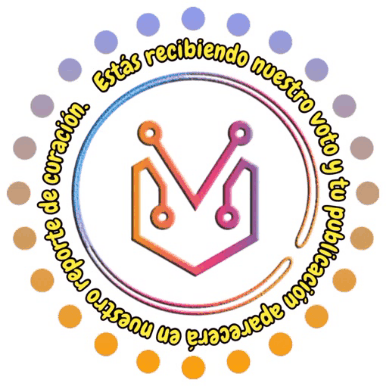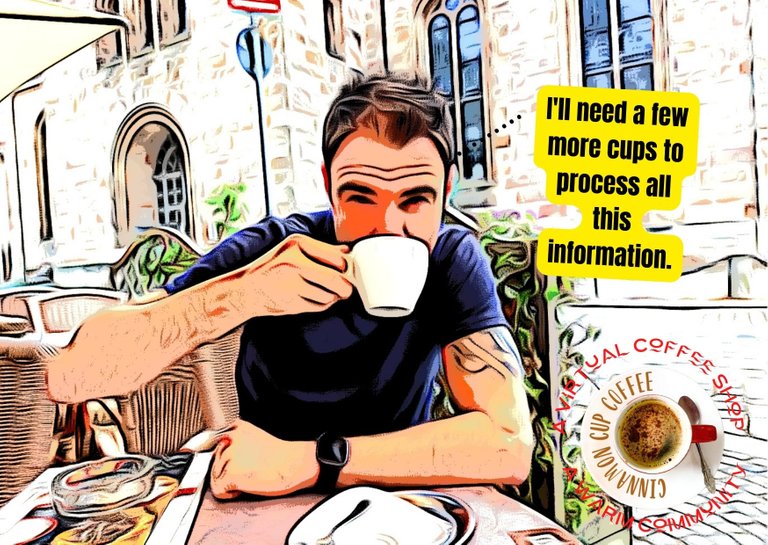A big greeting to my dear friends who enjoy coffee as much as I do. Today I want to tell you about my experience, of drinking coffee in a clay cup, adding to the review the tasting of a traditional sweet in the snacks of some regions of my country, the famous guava bread


For a long time there has been a legend, or rather a myth, that is deeply rooted, especially in the populations of South America, which has to do with a cultural belief that has passed through generations from mouth-to-mouth, since our ancestors in the very time when Christopher Columbus visited the New World.
According to the elders, the ancient Indians had the belief that the good coffee bean only when it is totally pure, is a true delight when served very hot in a clay cup made from the clayey earth that is part of ourselves, since as in Christianity, in the aboriginal rites their God also created man from the clay, in addition, the plants are nourished naturally from the earth, which according to them, notably influences the flavor, acidity, and aroma of the good coffee.
This myth also speaks of the fact that when a coffee bean is of poor quality or is linked to other things that make it lose its purity when it is served in a clay cup, it will change its flavor and become bitter or acidic, which, although it is only a custom, it may have some type of demonstrable basis in the world of science, because there is certainly the possibility that a mixture of beans that is not 100% pure coffee could react chemically with the components of the clay container and change its properties to alter the taste, smell, and even the color of the liquid, making it become bitter, acidic or at least with an unappetizing taste.

In this opportunity, I do not have the scientific equipment that could determine such a reaction, and it is not my intention to promote a science class, I simply want to tell you about my experience, of tasting a good coffee, in a clay cup made in an artisanal way by the hands of people who have kept alive the cultures and customs of my country for centuries.
For this snack, I bought a 100% authentic cup in a handicraft store in the city of Barquisimeto, Lara State, Venezuela. I also took the opportunity to buy a traditional sweet of the area, the guava bread, which is ideal to complement a delicious snack.
For the test, I used 100% pure ground Arabica coffee beans that are sold in open-air farmers' markets. It was roasted over a wood fire, giving it a very peculiar smoky flavor that enhances its aroma and freshness. This coffee was prepared simply, using the technique of brewing in a cloth bag, which is the most traditional technique used even by several indigenous tribes today. The result was simply wonderful, a dark brown liquid with a caramel-like color and a delicious aroma, which quickly took over my home in a spectacular way.
Finally, I poured it piping hot into the earthenware cup and let it steep for a couple of minutes, while I enjoyed the lush steam rising from it. I cannot chemically affirm if the clay cup affected in any way the integrity of the preparation, but I must inform you that the coffee maintained its special flavor and adequate temperature for much longer than in a conventional cup, it did not become bitter or acidic at all, it had a balance that we can call natural in its delicious flavor and aroma.
As for its companion, I must tell you that the guava bread is the perfect combination for this drink, it is a sweet bread made in the form of a roll which is filled with fresh and natural guava jam, this product does not have any preservatives or chemical additives and can be purchased very fresh, fresh out of an artisan adobe oven, fueled with dry wood from trees in the area, I must tell you that it is a delicacy of Gods that you have to try sometime.
Well, dear friends, this is my review of this delicious snack, I hope you can enjoy it at some point, I cordially invite you to tell me about your own experiences with the clay pots and the preparations of your country, based on the indigenous culture.


Thank you for reading
This is an Original Story written by @susurrodelmisterio for Hive.
All copyrights reserved.
© Copyright 2022 Susurro del Misterio



